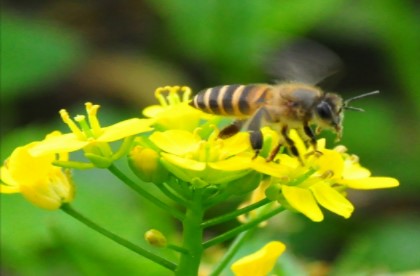News
What Are the Differences Between Raw, Pure, and Natural Honey?

Honey, sweet, viscous liquid food, dark golden in colour, produced in the honey sacs of various bees from the nectar of flowers. Flavour and colour are determined by the flowers from which the nectar is gathered. Some of the most commercially desirable honeys are produced from clover by the domestic honeybee. The nectar is ripened into honey by inversion of the major portion of its sucrose sugar into the sugars levulose (fructose) and dextrose (glucose) and by the removal of excess moisture.
Honey is stored in the beehive or nest in a honeycomb, a double layer of uniform hexagonal cells constructed of beeswax (secreted by the worker bees) and propolis (a plant resin collected by the workers). Honeycomb is used in winter as food for the larvae and other members of the colony. It is commonly sold by beekeepers as a delicacy, or the wax may be extracted for various purposes.
Honey contains about 18 percent water, is water soluble, and may granulate between 50 and 65 °F (10 and 18 °C). Somewhat acid, it has mild antiseptic properties and has been used in the treatment of burns and lacerations. One of the most easily assimilated foods, it is widely used in baked goods, candies, prepared fruits, cereals, and medicines.
All honey comes from the same place, but labels reading raw, pure, and natural can get pretty confusing. Raw honey is typically pure and natural, but pure and natural honeys aren't always raw. Still sound complicated? Think of it this way:
1. Natural means no artificial additives.
2.Pure means no additives whatsoever (even natural ones).
3. Raw means no additives or processing.
The term natural for any food, including honey, suggests that it doesn't include any added color, artificial flavor, or synthetic substance, according to the USDA. But the term is unregulated, so the only way to be sure is to check the ingredient list for any artificial additives.
Pure Honey
With pure honey, no additional ingredients —such as sugar, corn syrup, or artificial or natural flavoring—appear on the label. Pure honey may also be labeled as clover or raspberry honey, depending on which plant the bees derived their nectar from. (Beekeepers typically keep their bees near certain plants exclusively, to ensure that the bees get nectar from only those plants.)
Raw Honey
Raw honey has been neither heated nor filtered. Unless you see the term raw on a honey label, you can assume that it's processed. Most honeys, including pure and natural ones, are treated to prevent fermentation and preserve it in a liquid state in order to keep it from crystallizing. These techniques make the product more appealing to consumers; shoppers generally prefer to pick up a bottle of clear, golden honey, because that's what we're used to. Advocates for eating raw honey believe those who choose conventional honey might be missing out on certain benefits:
1. better taste
2. more enzymes
3. more antioxidants
4. the ability to relieve allergies
Raw honey isn't necessarily much richer in minerals, enzymes, and antioxidants than processed honey. The National Honey Board website lists numerous studies, some funded by the Honey Board and some published in scientific journals, that show that heating and filtering of processed honey removes only a small portion of these substances.
The evidence for raw honey's effect on allergies is inconclusive. At least one study in 2002 in the Annals of Allergy, Asthma and Immunology found that honey didn't provide relief. But another published in 2011 by the International Archives of Allergy and Immunology showed that birch honey relieved symptoms of people allergic to birch pollen.
CATEGORIES
LATEST NEWS
CONTACT US
Mobile:+86-18612182039
Tel:+86-029-85274126
Whatsapp:+8618612182039
Email:info@watarbio.com
Add:No. 12, Hongzhuan South Road, Yanta District, Xi’an 710061, China
